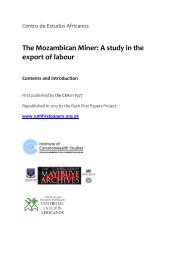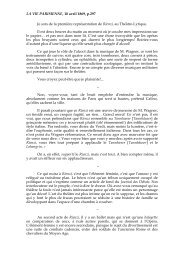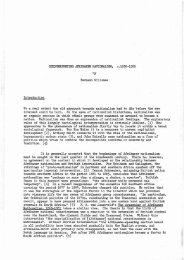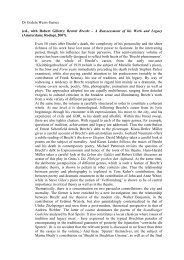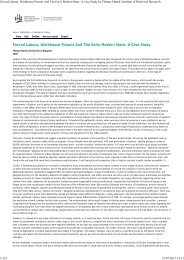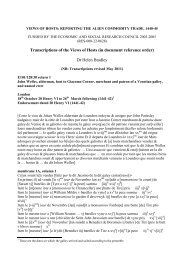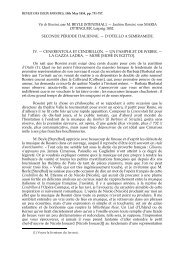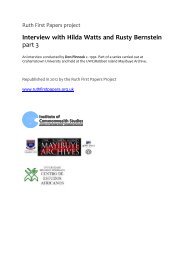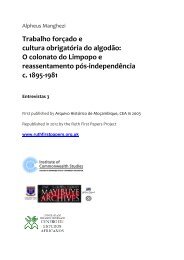Roraima: Brazil's northernmost frontier by John Hemming - SAS-Space
Roraima: Brazil's northernmost frontier by John Hemming - SAS-Space
Roraima: Brazil's northernmost frontier by John Hemming - SAS-Space
Create successful ePaper yourself
Turn your PDF publications into a flip-book with our unique Google optimized e-Paper software.
thousand of them.' 45 The Makuxi excelled as cowboys and the labour on the<br />
Sao Marcos national fazenda came exclusively from this tribe. Both Makuxi<br />
and Wapixana provided crews for cattle boats down the Rio Branco: but it<br />
was best not to mix the two tribes since there was still lingering animosity between<br />
them.<br />
Nineteenth-century travellers described both Wapixana and Makuxi as<br />
handsome, hospitable and good-natured. Many of these Indians continued<br />
to live in tribal villages far from colonial society. These attractive tribes often<br />
suffered at the hands of white settlers. Slavery of Brazilian Indians had been<br />
forbidden <strong>by</strong> law since 1755; but it often continued under other pretexts and<br />
guises. Nineteenth-century accounts of life in Amazonia <strong>by</strong> both Brazilian<br />
and foreign authors are full of descriptions of persecution of Indians, who<br />
tended to be gullible, subservient and uncomplaining.<br />
When Schomburgk was on the Tacutu in 1838 he was appalled to meet the<br />
canoes of 'a press-gang, a most villainous looking body, lately sent <strong>by</strong> the<br />
Brazilian authorities to press Indians for the navy'. This gang, from the Rio<br />
Negro, was led <strong>by</strong> 'a man who is already famed for the successful descent<br />
upon unsuspecting Indians, "not for the conquest of souls", but for selling<br />
them as slaves to his allies'. Down at Fort Sao Joaquim, Schomburgk later<br />
met some victims of this press gang. They told him 'that they had been surprised<br />
at night, had been fired at, two huts set on fire, and those who had not<br />
been able to make their escape had been led away with their hands tied to<br />
their back'. 46 Schomburgk protested to the fort's commander Pedro Ayres,<br />
who admitted that 'inferior officers wished to use the pressing of Indians for<br />
the navy as an excuse to procure young and old, in order to sell those who<br />
were not fit for that purpose to their allies'. 47<br />
Coudreau wrote that in the 1870s a Cearense fazendeiro called Fernando<br />
often led his men in attacks on the Wapixana and related Aturiau, in the area<br />
east of Boa Vista, violating women and destroying plantation clearings. The<br />
Wapixana fled eastwards. Although the Aturiau eventually killed Fernando,<br />
his depradations had shattered these tribes, and their lands were usurped for<br />
cattle ranching.<br />
In the following decade an equally violent settler called Hollanda Bessa<br />
established himself on the middle Uraricoera river, north-west of Boa Vista.<br />
Koch-Grunberg described Bessa as a murderer who, with his accomplices,<br />
had killed some white settlers, three Purokoto and one Maku Indian. When<br />
Bessa arrived, 'there were many Indians of different tribes here and on<br />
Maraca island. Bessa chased them from their homes and plantations because<br />
[he claimed that] the land belonged to him. He burned their huts during the<br />
rainy season. The poor people fled from him into the forest; but they fell ill<br />
from fevers with no protection against the wet and many, especially children,<br />
died. As a result, only piteous remnants of those tribes are to be found<br />
around Maraca [in 1911]. Bessa was charged, but released on the testimony<br />
of good friends he had in the ruling party. The Indians are too indolent to kill



